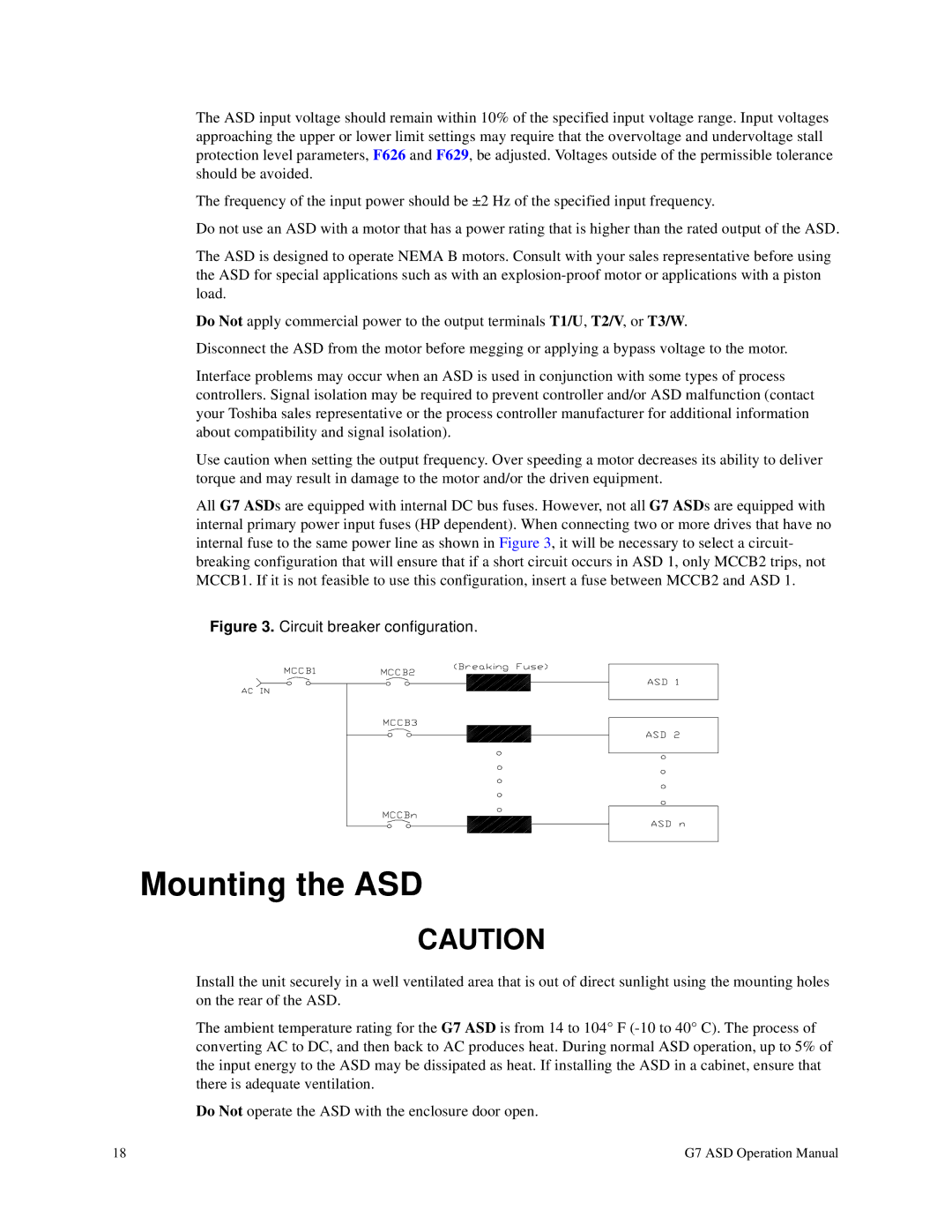
The ASD input voltage should remain within 10% of the specified input voltage range. Input voltages approaching the upper or lower limit settings may require that the overvoltage and undervoltage stall protection level parameters, F626 and F629, be adjusted. Voltages outside of the permissible tolerance should be avoided.
The frequency of the input power should be ±2 Hz of the specified input frequency.
Do not use an ASD with a motor that has a power rating that is higher than the rated output of the ASD.
The ASD is designed to operate NEMA B motors. Consult with your sales representative before using the ASD for special applications such as with an
Do Not apply commercial power to the output terminals T1/U, T2/V, or T3/W.
Disconnect the ASD from the motor before megging or applying a bypass voltage to the motor.
Interface problems may occur when an ASD is used in conjunction with some types of process controllers. Signal isolation may be required to prevent controller and/or ASD malfunction (contact your Toshiba sales representative or the process controller manufacturer for additional information about compatibility and signal isolation).
Use caution when setting the output frequency. Over speeding a motor decreases its ability to deliver torque and may result in damage to the motor and/or the driven equipment.
All G7 ASDs are equipped with internal DC bus fuses. However, not all G7 ASDs are equipped with internal primary power input fuses (HP dependent). When connecting two or more drives that have no internal fuse to the same power line as shown in Figure 3, it will be necessary to select a circuit- breaking configuration that will ensure that if a short circuit occurs in ASD 1, only MCCB2 trips, not MCCB1. If it is not feasible to use this configuration, insert a fuse between MCCB2 and ASD 1.
Figure 3. Circuit breaker configuration.
Mounting the ASD
![]()
![]()
![]() CAUTION
CAUTION
Install the unit securely in a well ventilated area that is out of direct sunlight using the mounting holes on the rear of the ASD.
The ambient temperature rating for the G7 ASD is from 14 to 104° F
Do Not operate the ASD with the enclosure door open.
18 | G7 ASD Operation Manual |
